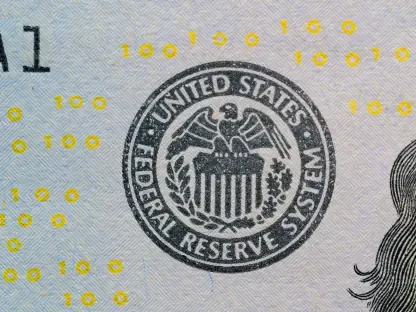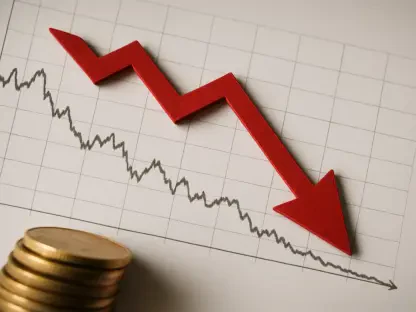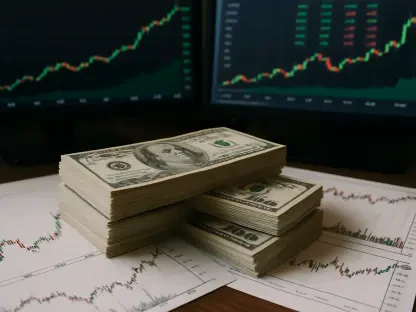In the lead-up to the 2024 presidential election, the United States economy painted an optimistic picture, with indicators such as low unemployment rates, controlled inflation, and steady growth boosting the national mood. However, despite the favorable economic markers, nationwide dissatisfaction surged, largely over increasing prices for essential items, particularly eggs. This mounting discontent played a critical role in Donald Trump’s electoral victory as he harnessed the public’s frustration and pledged sweeping economic reforms aimed at turning the situation around. Yet, as time has passed, many feel that these promises remain unfulfilled, casting a shadow over the initial optimism that accompanied his victory.
Since then, the U.S. economy has experienced significant turmoil, shedding its “envy of the world” status and diving into financial instability. Capital markets and consumer confidence reveal a glaring lack of optimism, with indicators falling below expectations. The economic revolution Trump promised has indeed taken shape but not in the beneficial manner many hoped for. Instead, several alarming trends have surfaced, casting doubt on the effectiveness and long-term impacts of his economic policies.
Plummeting Stock Markets and Investor Sentiment
Following Trump’s election, stock markets have faced substantial declines, undoing gains seen immediately after his electoral win. Headlines consistently highlight dramatic losses, labeling specific days as the “worst since” certain historical events, which indicates deep-seated market concerns. Major indices like the S&P 500, the Dow Jones Industrial Average, and the Nasdaq have been particularly hard-hit, reflecting widespread investor unease. This downturn has been severe enough to garner international attention, making it clear that the optimism that initially accompanied Trump’s victory has evaporated quickly.
Adding to these concerns, the CNN Fear and Greed Index, which gauges investor sentiment, has been dominated by “extreme fear.” This pervasive fear influences investor decisions, contributing further to market volatility. The sentiment has created a self-perpetuating cycle of sell-offs, as investors rush to divest in response to declining confidence levels. The psychological impact of continuous negative headlines has made the markets even more sensitive to fluctuations, further compounding the problem.
Unsettled Bond Markets and Interest Rate Speculations
Bond markets have also been thrown into disarray, primarily owing to Trump’s unsteady economic policies, particularly on trade. The unpredictability and inconsistency of these policies have led investors to fear potential stunted growth, casting a pall over the bond markets. The resultant uncertainty has driven bond prices down and yields up, indicating a lack of confidence in the government’s financial stewardship. This instability is particularly troubling given the traditionally stable nature of bond markets.
As a result, there is widespread speculation about how the Federal Reserve might respond to these economic challenges. One dominant theory is that the Fed could cut interest rates to counteract the inflationary pressures generated by Trump’s import taxes and the subsequent increase in business and consumer costs. These speculations highlight a broader concern: that Trump’s policy maneuvers may necessitate drastic action to keep the economy afloat. The potential of interest rate cuts, however, carries its own risks, including the possibility of inflating other economic bubbles, which could pose further dangers down the line.
Consumer Confidence Decline
Consumer confidence, an essential barometer of economic health, has plummeted at the fastest rate in over three years. The decline is largely attributed to tariff policies imposed by Trump on America’s significant trade partners. These tariffs have resulted in heightened concerns about escalating prices among the American public, negatively impacting their spending behavior. When consumers feel uncertain about the future, their spending diminishes, leading to a slowdown in economic activity. This cyclical effect underscores the broader issues caused by the current economic policies.
Trump’s commerce secretary, Howard Lutnick, has offered reassurances that these negative trends do not stem from Trump’s policies but rather from legacy issues of the previous administration. However, economic experts and analysts are not convinced. Many directly attribute the downturn in consumer confidence to recent policy decisions, which have had immediate and visible impacts. This sentiment among experts suggests that current economic challenges are not merely inherited problems but are significantly exacerbated by the policies implemented over the past few months.
Manufacturing and Agricultural Sectors Struggle
The manufacturing sector initially showed a temporary improvement in the PMI (Purchasing Managers’ Index), which some interpreted as a sign of economic health. However, upon closer examination, this rise was merely a response to manufacturers hastily boosting production before trade barriers and rising input costs took full effect. This short-term uptick is misleading as it does not represent sustained economic strength but rather a reactionary spike amidst impending policy changes. Once these changes fully implement, the true state of the manufacturing sector will likely reveal itself, and it may not be favorable.
Farmers, on the other hand, are facing severe challenges. The latest retaliatory tariffs from China target over $20 billion in U.S. agricultural exports, exacerbating difficulties stemming from previous trade wars during Trump’s first term. Farmers are struggling to maintain their livelihoods amidst escalating costs and diminishing international market access. Trump’s calls for farmer support ring hollow in the face of these harsh realities, leaving a significant segment of the American economy in dire straits. This situation underscores the broader ramifications of trade wars, where short-term political maneuvers can have long-lasting and deeply damaging consequences.
Dollar Depreciation and Employment Warnings
The U.S. dollar’s depreciation against a broad spectrum of global currencies signals a pervasive lack of confidence in America’s financial stability. Typically, imposing trade barriers would strengthen the domestic currency by reducing imports and promoting exports. However, the current situation diverges from this norm, reflecting deeper market anxieties about the efficacy and impact of Trump’s economic policies. This depreciation has widespread implications, making imports more expensive and amplifying the inflationary pressures already present in the economy.
Furthermore, early warnings suggest a significant slowdown in new job creation, compounding economists’ revised, pessimistic growth predictions for 2025. Some metrics even predict a substantial economic contraction in the first quarter, a stark shift from previously optimistic forecasts. These employment figures are crucial as they directly impact consumer spending and confidence. A slowdown in job creation can lead to a vicious cycle of reduced spending, lower business revenues, and further job cuts, intensifying the economic downturn. The current trends, therefore, present a grim outlook for near-term economic health.
Logistical Challenges and Strategic Uncertainty
As the 2024 presidential election approached, the U.S. economy appeared robust, evidenced by low unemployment, controlled inflation, and steady growth, boosting the national mood. Despite these positive indicators, dissatisfaction surged nationwide due to rising prices for essentials like eggs. This discontent played a crucial role in Donald Trump’s electoral victory. He tapped into public frustration, promising sweeping economic reforms to address the issues. However, as time passed, many felt these promises went unfulfilled, casting a shadow over the initial optimism following his win.
Since then, the U.S. economy has faced significant turmoil, losing its “envy of the world” status and descending into financial instability. Capital markets and consumer confidence now reflect a stark lack of optimism, with indicators falling short of expectations. Though Trump’s promised economic revolution did materialize, it failed to bring the hoped-for benefits. Instead, several worrisome trends have emerged, raising doubts about the effectiveness and long-term impact of his economic policies, leaving the nation to reassess its economic future.









